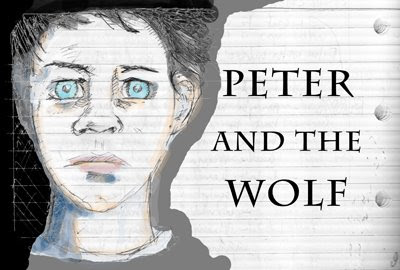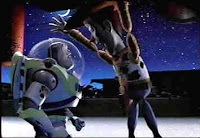
Here is something I was thinking about as I was weaving through peak hour traffic on my scooter being chased home by a subtropical thunderstorm... If I were to say to you:
Learning is being interested in something and wanting to know more about it. It is the major task of a student.
In an attempt at a visual metaphor, learning is the gathering of shiny knowledge nuggets to put inside the treasure chest of memory inside one's brain.
The need to learn is the pilot light, the interest in the craft, flickering within the animation student.
Teaching is being interested in facilitating (helping) the learning by the animation student in a craft that the teacher is passionate about. It is about igniting the passion for animation within the student mind. The teacher is a big blast of flammable gas!
Maybe that didn't come quite right? Start again...
I have observed an interesting contradiction in some young animators. They want to be told the answers to important animation questions put to them in class. But at the same time they do not like to be told what to do. "Tell me the answers but don't tell me what to do."
Hmm, fascinating. Quite the conundrum.
There seems to exist an impatience to
be. To be an animator, maybe even a notion to be a good one, but not enough patience to apply the time to learn how. That is,
to learn animation the best way by finding the answers for themselves.
Curiosity may have killed some cats, but to my knowledge it is not yet a lethal problem for animation students.
Let's face it, the animation teacher is not a repository of all animation knowledge. But animation teachers do know where to guide a student to look. And we do know the difference between an animation gold nugget and a polished turd.
Now before anyone goes jumping up and down trying to mount a high horse, 'polished turd' is a recognised animation industry term in common usage.
One of my animation teachers used to talk about, "The WHAT and the HOW" in animation and I hope he will one day write down his thoughts (he also talked a lot about polished turds). His context for "the WHAT and the HOW" was the what and how
to animate.
I'm using it in the context of being. The what and how
to be a good animator.
First up, the
what. Ask an animation student, once they have enough information about the craft to actually want to continue practising it, rather than just be entertained by it, "What do you want to be?" They will invariably say, "A good animator."
Next, the
how. "How do you get to be a good animator?" Voila! some fantastic facial animation video reference. Occasionally a blank look (that creates a mental uh-oh).
The
how is about learning. Learning
how to become a good animator.
There is a lot of fool's gold out there for the curious animation student who strikes out on
their own without a map; things that look like animation information but are just a pile of polished turds. The teacher is the treasure map to show students where to find animation knowledge. "Y' dig?" Turds are just fine for making compost but, really folks, are no fun to dig around in.
The student is the treasure hunter. And there is a big mountain of animation gold (knowledge) in the world's libraries (even the one at
SBIT), on the Internet, on DVDs, some in your teacher's memory, some in other animators and lots in the local industry full of experienced but time poor animators. The treasure map, the teacher, is trying to guide animators to it while avoiding the turds. Yup, I wrote turds again.
People don't get to
be good animators without learning how to animate.
Ponder this, the treasure doesn't get delivered to Jack Sparrow's or Indiana Jones' front door. The murderer doesn't walk into Sherlock Holmes' office and give themselves up. These interested adventurers go out, do their research, dig around a bit here and there looking for clues and then they find it. The producers and financiers applaud as hard as the audience. Rhetoric warning. But did you ever notice the real treasure is all the things they discovered along the way?
The larger the desert to cross, the sweeter the beer on the other side. Next time you attempt to cross a desert you would have learned, taught yourself, that it is easier in the company of a camel and a bag of dates. And the beer in
Agadir tastes like nectar. If you just jumped aboard the Polished Turd Airlines flight from Cairo, the beer in
Agadir just tastes like
Moroccan beer and all you've learnt is that they allow smoking in business class and that little
curtain is no barrier to the stench. I think I just typed that because I'm thirsty.
The questions and tasks assigned in class are not "telling an animator what to do". They are a trail of information bread crumbs, carefully selected sign posts, to lead animation students along their own path of discovery in how to animate.
Facilitate your own learning. Bring the things that you find in your research, your discoveries while looking for the answers to tasks and assessment items. Bring them to your teacher and we will pick off the bits that look like turds and work out together whether it is animation fool's gold or the real thing.
Discovering the important things for yourself, while being guided by your teacher, will make you a good animator.








 Boiled down, and for animators at the start of our 3D animating careers, the technique is all about planning our animation sequences fully before we open the 3D software.
Boiled down, and for animators at the start of our 3D animating careers, the technique is all about planning our animation sequences fully before we open the 3D software. This is where I'll bring in Shawn Kelly from AnimationMentor. He is a big gun.
This is where I'll bring in Shawn Kelly from AnimationMentor. He is a big gun.















 In preparation for a 3D
In preparation for a 3D  I just need to post this here as part of my teaching. The second year students will understand.
I just need to post this here as part of my teaching. The second year students will understand.

